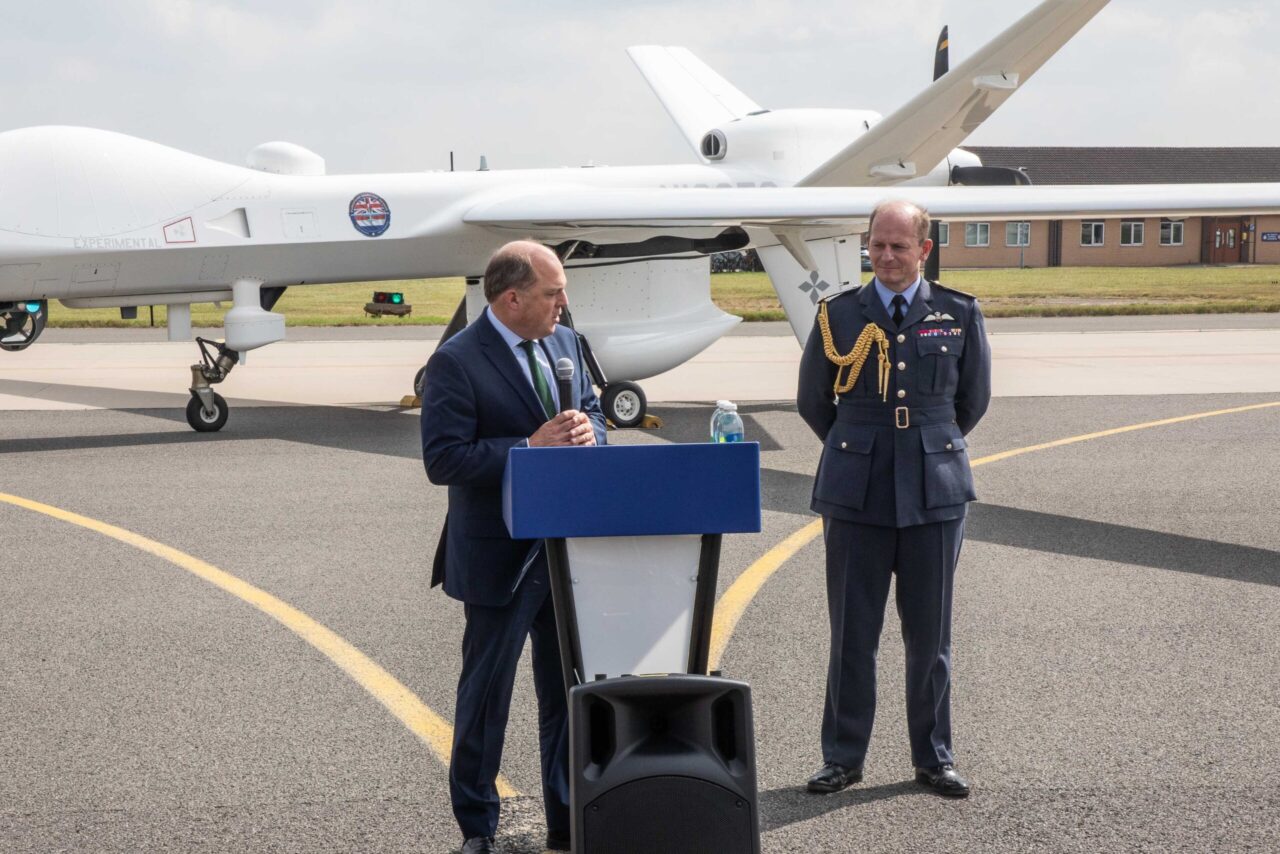
This image shows Secretary of State for Defence, Ben Wallace along with Chief of the Air Staff, Air Chief Marshal Sir Mike Wigston talking about the Protector programme with various news outlets. A pre-production example of the UKs new Protector aircraft has taken to the UK skies as part of preparations for the arrival of Protector to RAF Waddington. Operating from RAF Waddington, the SkyGuardian aircraft has undertaken a number of sorties , showcasing its impressive capabilities while also providing vital information as personnel at RAF Waddington prepare for the arrival of Protector in 2024. The UK has ordered 16 Protector aircraft from General Atomics-Aeronautical Systems Inc (GA-ASI). All will be based at RAF Waddington, the RAFs ISTAR hub.
The General Atomics‘ RG Mk1 Protector drone is expected to enter service with the Royal Air Force (RAF) by 2024, and the United Kingdom Ministry of Defense has announced a nearly $130 million upgrade for the RAF Waddington base to prepare for the deployment of 16 such drones to replace the nine MQ-9 General Atomic Reapers now used by the RAF.
RAF Waddington is to be the RAF’s Intelligence, Surveillance, Target Acquisition and Reconnaissance (ISTAR) hub and is to house the Protector International Training Center, which will include the aircraft’s Synthetic Training System.
The Protector is to be the U.K.’s version of the General Atomics’ MQ-9B SkyGuardian, which has several configurations, including the maritime SeaGuardian with a multimode 360-degree field-of-regard Maritime Patrol Radar and optional sonobuoy capability.
Protector is to have a 40,000 foot ceiling for missions up to 40 hours, encrypted data links and Mode V Identification Friend or Foe, satellite beyond line of sight communications through the U.K.’s SKYNET X-band system and a backup Inmarsat system, and a better sensor and weapons load-out than Reaper.
“Protector is fitted with upgraded sensors from Reaper, enabling better resolution across more spectral bands to a higher degree of accuracy,” RAF Squadron leader Stu Watkinson said last September in a speech obtained by Drone Wars UK, a group opposed to armed drones. “This data will not only be used in a tactical sense by the crew and immediate customers through line of sight and beyond line of sight communications but will also be stored and available for retrieval by the U.K. and its allies.”
Weapons for the Protector are to include MBDA‘s Brimstone 3–a dual seeker missile for striking armor and moving targets–and Raytheon U.K.’s Paveway IV 500 pound laser-guided and GPS munition.
“These weapons have proven highly effective during operations in Iraq and Syria from both the Tornado and Typhoon aircraft,” Watkinson said last September.
Flight tests continue of the pre-production version of Protector. The prototype had its first flight last September.
Last week, U.K. Defense Secretary Ben Wallace viewed the prototype at RAF Waddington and said that the U.K. is prepared for drone strikes against the Taliban in Afghanistan should the group foster or pursue terrorism.
Beside RAF use, the Protector is to fly in civil airspace to perform disaster response missions, such as fire and flood reconnaissance.
General Atomics has said that it is working to integrate a detect and avoid (DAA) system on Protector–a system with a “Due Regard” air-to-air radar and processor, Traffic Collision Avoidance System (TCAS II), and Automatic Dependent Surveillance-Broadcast (ADS-B). Protector is also to have all-weather performance with lightning protection, damage tolerance, and a de-icing system, the company said.
This article was first published by Defense Daily, a sister publication to Avionics, it has been edited, to view the original version, click here.